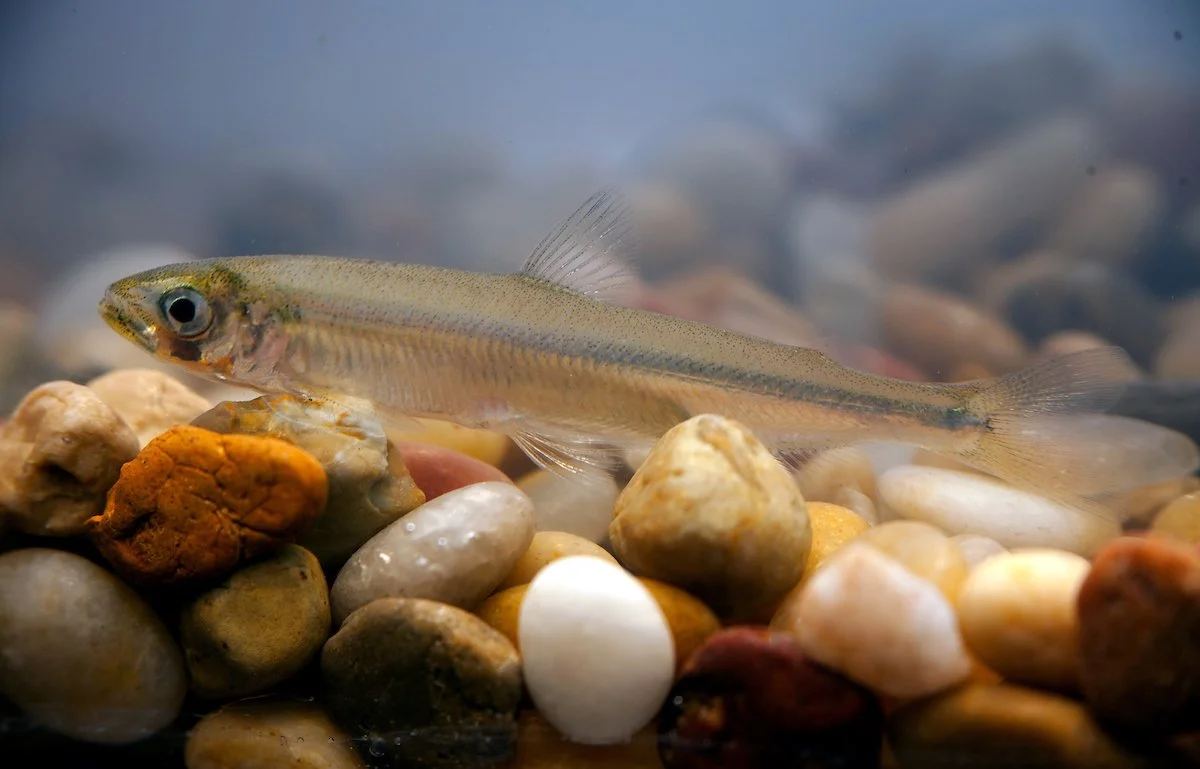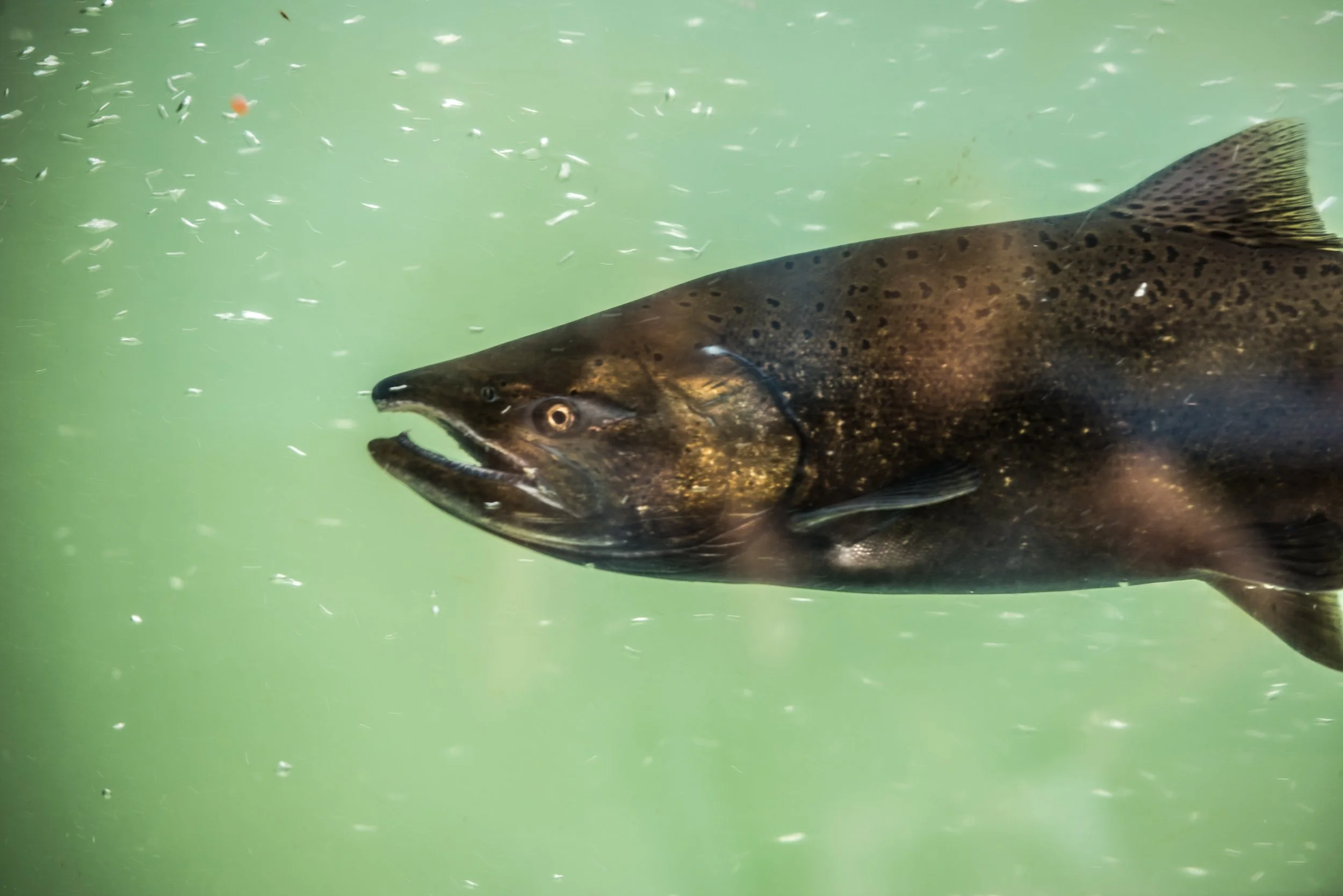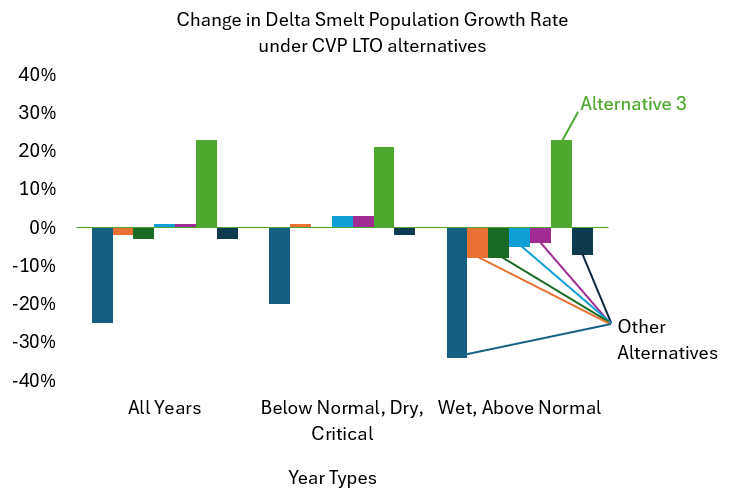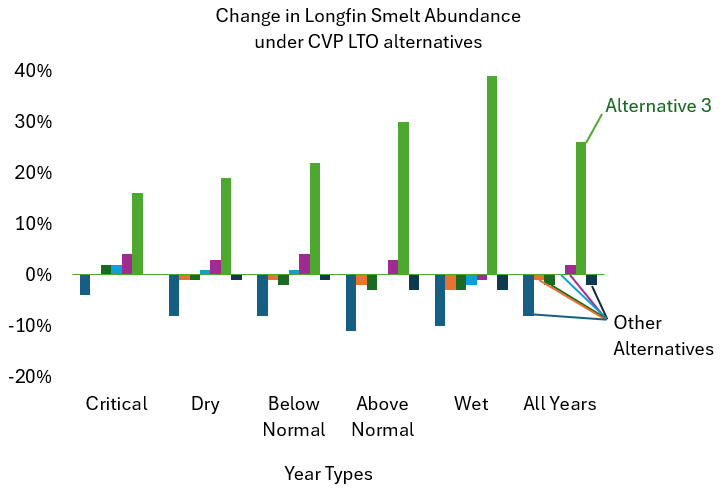Everything Happens Twice in Endangered Species Land - And Not Always for the Better
First, Endangered Species Updates are Hijacked by Trump, and then by Newsom
!! ACTION ALERT !!
You can lend your voice to protect endangered species with as little as an email! Scroll down for instructions and a template email urging the U.S. Bureau of Reclamation to adopt science-based environmental protections for their massive water export project. Jump to Action.
Tiny endangered delta smelt at the U.C. Davis Fish Conservation and Culture Lab near Byron, CA. Credit Dale Kolke, Department of Water Resources, 2008.
“Hegel remarks somewhere that all great world-historic facts and personages appear, so to speak, twice. He forgot to add: the first time as tragedy, the second time as farce.” —- Marx, The Eighteenth Brumaire of Louis Bonaparte
The California water version of this famous remark might go something like this: the hijacking of the process to update Endangered Species Act (ESA) protections happens twice, the first time by President Trump, the second time by Governor Newsom. But nobody’s laughing the second time around. Instead, Friends of the River and its allies are working to prevent a replay and ensure that new, stronger ESA regulations needed to save critically endangered fish populations are ultimately adopted.
It was the widely acknowledged dire status of the ecosystems of the San Francisco Bay-Delta estuary (Bay-Delta) and the rivers of its vast Central Valley watershed – fish populations at record- or near-record lows, commercial fishery closures, increasing toxic algal bloom events – that over the past fifteen years prompted a number of initiatives to improve the regulatory protections for our endangered fish and wildlife species. One of the most important was to update federal ESA regulations for Chinook salmon and Delta smelt. Delta smelt, once one of the estuary's most common fish and a critical component of the food web, are now its rarest.
In 2016, under the Obama Administration, the U.S. Bureau of Reclamation (BOR, which operates the Central Valley Project) and the California Department of Water Resources (DWR, which operates the State Water Project, or SWP) requested a “Reinitiation of Consultation” with the U.S. Fish and Wildlife Service and the National Marine Fisheries Service to re-evaluate and revise the “biological opinions” (BiOps). That is, to update and significantly change the permit terms under which the largest water projects in the state operate in order to avoid causing jeopardy to listed species. In other words, the federal government committed to issue new or amended BiOps to increase endangered species protections, which would likely result in more freshwater flow and reductions in water exports from the Delta.
An adult Chinook salmon at the Feather River Fish Hatchery. Credit: Florence Low, Department of Water Resources, 2014.
The updating of the BiOps was turned on its head the following year by the incoming Trump administration. Instead of improving ESA requirements, President Trump issued new BiOps in 2019 that actually weakened or removed key protections. (To make matters worse, in late 2016 the lame duck Congress passed the Water Improvements in Infrastructure for the Nation (WIIN) Act, which directed the projects to maximize Delta pumping, including exceeding limits in place to protect endangered species, under certain conditions).
The Trump BiOps were immediately challenged in court by a coalition of environmental groups, including The Bay Institute (whose staff recently moved to FOR). During the litigation process, hundreds of documents emerged showing how the Trump administration had overruled federal agency scientists and completely rewritten the draft BiOps in order to avoid a jeopardy opinion and instead increase water deliveries to corporate agribusiness south of the Delta.(1)
As a result of these revelations; the clear scientific evidence that stronger protections were needed; and the change in federal administration from Trump to Biden in 2021, BOR and DWR again requested “Reinitiation of Consultation,” this time to update the obviously inadequate 2019 BiOps. What could go wrong?
The seatbelt sign is on, so strap in. Under Governor Newsom, the State of California had also opposed the Trump BiOps in court. But instead of supporting reduced water exports and increased freshwater flows, in 2022, the Newsom Administration proposed a set of Voluntary Agreements (VAs) (fact sheet) in partnership with water users as the new basis for updated protections for endangered species and water quality. Paradoxically, the VAs assumed the 2019 BiOps – the same action that the state opposed – as the baseline for any new regulations. Even worse, the VAs would allow even more water to be exported in most years and provide no improved flows in the driest years.
In four documents – Reclamation’s draft Environmental Impact Statement on long term CVP and SWP operations, DWR’s draft Environmental Impact Report on long term SWP operations, and the draft BiOps from the U.S. Fish and Wildlife Service and the National Marine Fisheries Service, – the federal and state agencies lay out a preferred alternative where proposed actions from the VAs are substituted for any meaningful improvement in ESA requirements or water quality standards. According to analysis by FOR and others (see our DEIR comments and BiOps comments),
Under the VAs, river flows to the Bay-Delta estuary will decrease in all years compared to the pre-2019 BiOps baseline, which means that the Bay-Delta’s many flow-dependent species will continue to decline, commercial and recreational fisheries will continue to be subject to closure, and low flow-exacerbated toxic algal blooms will continue to threaten water quality and human health.
There is no assurance that the VAs will actually be implemented fully, or at all. Despite being under development for a decade, there is still no complete VA proposal, and no credible enforcement mechanism. However, the VAs continue to delay meaningful regulatory updates.
Not only would desperately-needed improvements in flow and temperature requirements be rejected, but even existing requirements like fall outflows to preserve Delta smelt habitat would be jettisoned. (Even in advance of any changes to the BiOps, there‘s pressure from water users(2)(3) to abandon the fall outflow requirement created by the current Delta smelt BiOp this year, even though this requirement only occurs in wetter years).
The analyses in these documents completely ignore the consistent waivers of endangered species and water quality protections, called Temporary Urgency Change Orders, which the state has issued in 6 out of the past 10 years. As a result, several years of winter- and spring-run Chinook salmon populations were devastated, and Delta smelt and other species plummeted to record or near-record low population levels. In other words, drought was used as an excuse to ignore requirements that were already known to be inadequate – and there’s no reason to expect that future requirements won’t be waived in the same way.
But there is a better way. To its credit, since 2021 Reclamation has worked with a team of experts from the environmental community, including FOR River Restoration Hydrologist Greg Reis, to design and evaluate an environmentally protective scenario (Alternative 3 in Reclamation’s Draft EIS) to be considered in its environmental analysis. This scenario includes major flow improvements and other requirements. Alternative 3 is the only approach that actually works to increase endangered fish populations (for instance, see how population growth changes for Delta smelt and longfin smelt changes in the accompanying graphs). No other alternative even moves the needle. Instead, under these other scenarios, endangered species continue to decline.
The environmentally protective scenario, called "Alternative 3," is the only scenario that increases populations of the endangered Delta smelt. Source: Graphs prepared by FOR and SF Baykeeper, from data in the Draft Environmental Impact Statement.
Similarly to the above, the environmentally protective scenario, called "Alternative 3," is the only scenario that increases populations of the endangered longfin smelt. Source: Graphs prepared by FOR and SF Baykeeper, from data in the Draft Environmental Impact Statement.
~~~~~
TAKE ACTION
What you can do: Send a comment to the U.S. Bureau of Reclamation urging the agency to refine and adopt Alternative 3 as the only alternative that actually prevents extinction and provides adequate conditions for recovery of salmon, smelt and other species.
Here’s a sample email you can use (or put into your own words) to let Reclamation know they need to do better:
From: Your email
Re: Draft EIS on Long-Term Ops of the CVP and SWP
Reclamation’s own analyses show that the Proposed Project in the Draft Environmental Impact Statement for Long-Term Operations of the Central Valley Project and State Water Project will lead to the extinction of endangered salmon and smelt. Only the science-based Alternative 3 supports recovery of these species. Reclamation must revise its operations as indicated in Alternative 3 to require greater flows, stronger temperature requirements, and other actions to save and recover endangered species and the ecosystems they depend on.
Resources
(3) FOR and partners’ letter to Sec. Haaland to maintain envrionmental (“X2”) requirements




